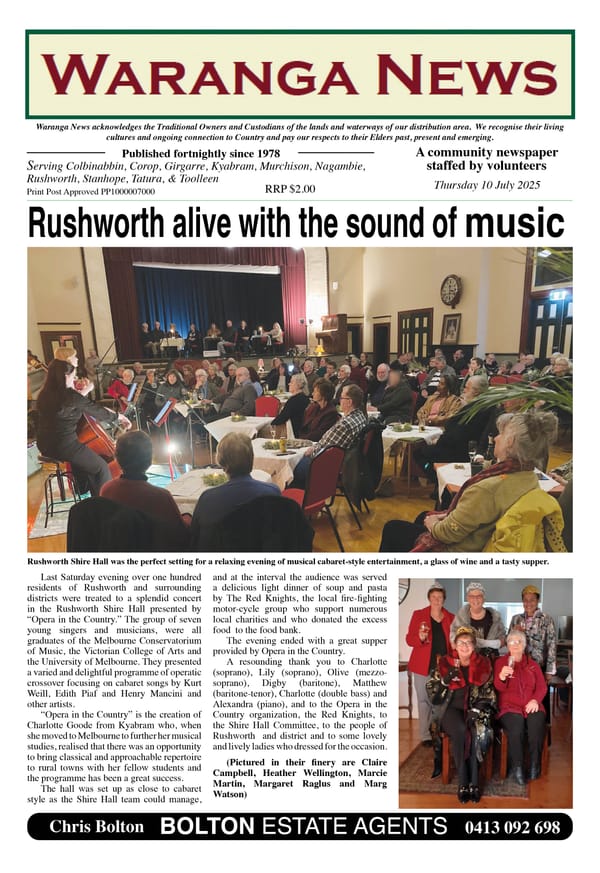8. Life in Chinese camps

The Chinese on the Waranga goldfields (as on other goldfields) tended to live in clearly defined camps. Maps from the late 1850s indicate there were at least four – two at Rushworth and two at Whroo. Language was a massive barrier to communication with other miners until the Chinese had been there long enough to learn some English. There were also great cultural differences from the Westerners. These factors could lead to racism – sometimes extreme – which discouraged the Chinese from living amongst the wider community.
There do not appear to be any detailed descriptions of the Chinese camps on the Waranga goldfields. However, at some of the larger centres, where there was a bigger concentration of Chinese people, observations have been made. You could expect that the camps at Waranga were similar, but perhaps on a smaller scale.
PEN PICTURE OF A CAMP
In May 1855, a Melbourne newspaper provided this description.1 “The visitor to the goldfields …cannot have failed to notice the small uniform-sized tents, huddled together and interspersed with sheep-pens, carpenters’ shops and various similar establishments, denoting that a community with somewhat of organisation existed there.
If he stayed there long enough, he may have observed numerous beings, with umbrella-shaped coverings to their heads, who seem to have stepped out of the china-ware whose grotesque figures were want to excite our youthful wonder. Some of these are trotting homewards carrying heavy burdens of sugar or of rice, suspended to bamboo poles, on their shoulders. Others are busily engaged in the butcher’s avocation, while the carpenters follow their trade squatting on the ground.
Those who are working as diggers are washing, puddling or sinking, with a fussy sort of industry, or running hither and thither like ants near their hill. Animated discussions are kept up in a sing-song style of elocution, and altogether a scene presented as dissimilar to anything European as can be conceived. It scarcely needs to be added that our visitor has before him the external features of a Chinese encampment.”
The description is by a European commentator, apparently struggling to suppress his disdain for what he is observing.
ANOTHER VIEW
The Chinese camps were generally very well-organised, with various people having designated tasks under the control of a headman. As well as those mentioned above, the camps had cooks to prepare all the meals for their compatriots, something the Europeans might have appreciated after a hard day of mining.
The coolie hats worn by the Chinese were probably about the most sensible hats you could possibly imagine in the heat of the Australian bush – light, wide-brimmed and sun smart. Bamboo poles were a very practical way to carry loads much larger than the average person could otherwise have done. There are plenty of records of Chinese men using the device with buckets on each end to carry water – always a scarce resource – long distances to the camps.
Plenty has been written about the capacity of the Chinese men to work hard all day as a team, from sunrise to sundown. This tended to create a degree of jealous resentment amongst the Europeans which could feed into racist outbursts.
OTHER FEATURES OF CAMPS
As communities became more established, there would have been stores, market gardens and perhaps a Joss House (temple). There is no mention in contemporary writing of Joss Houses being built on the Waranga goldfields. This was perhaps because the population was not large enough, or too transient compared to places like Bendigo and Castlemaine, to warrant one. As a temporary measure, a tent may have been used, as temples were central to the lives of the Chinese miners. Because of the importance of spirituality in their lives, it is inconceivable that there would have been no provision to cater for this need.
Supply lines to the camps were maintained by Chinese businessmen. Some of these were based in the so-called Chinatown in Little Bourke Street in Melbourne, which had already established as a centre for Chinese business and culture. Quite often, the businessmen were leading members of the so-called “secret” societies that also had a significant impact on the lives of the Chinese miners.
References: 1 The Argus 23.5.1855; 2 Theobold, Marjorie, Mount Alexander – Mountain of Gold 1851-1861




